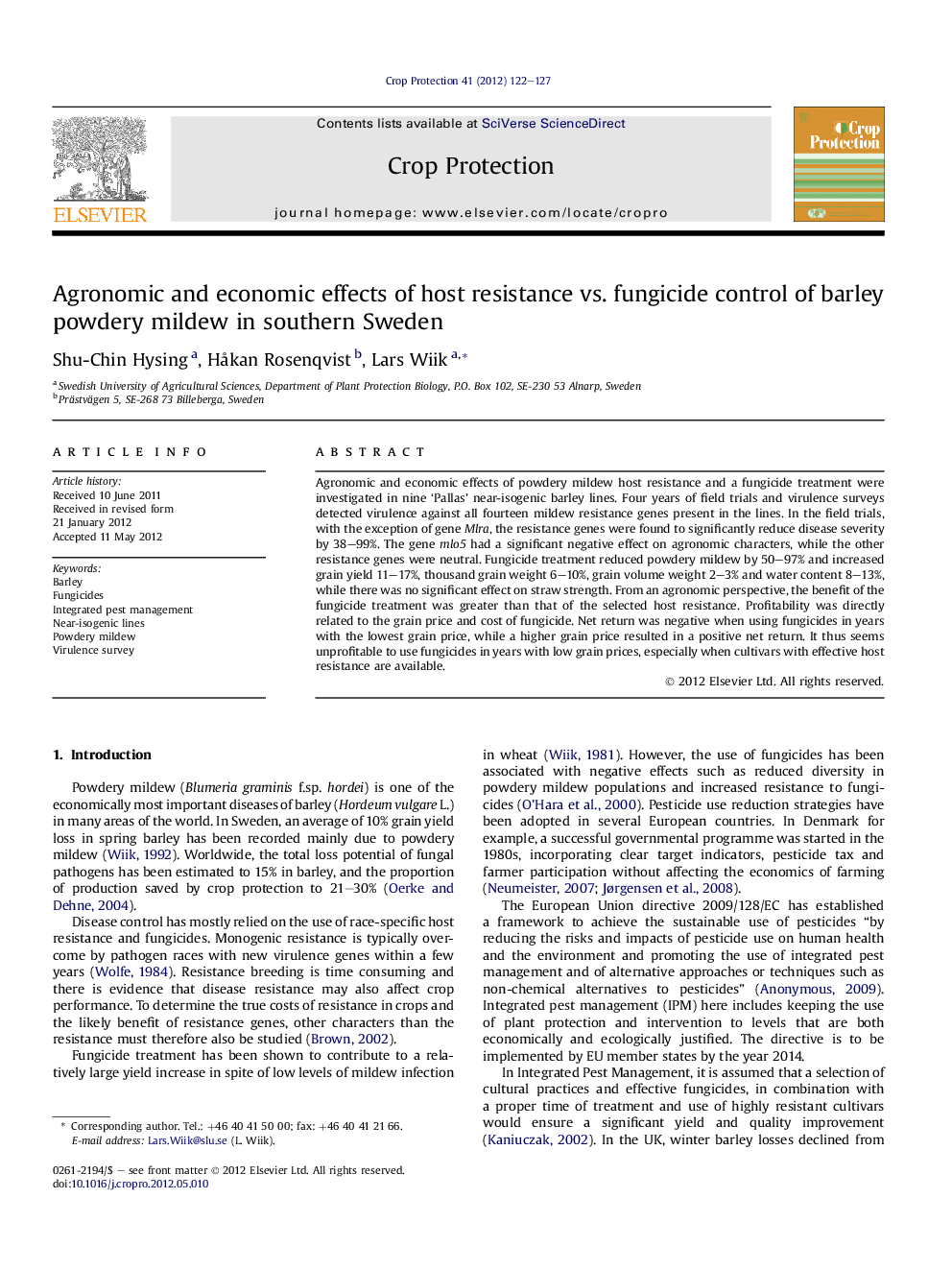| Article ID | Journal | Published Year | Pages | File Type |
|---|---|---|---|---|
| 4506223 | Crop Protection | 2012 | 6 Pages |
Agronomic and economic effects of powdery mildew host resistance and a fungicide treatment were investigated in nine ‘Pallas’ near-isogenic barley lines. Four years of field trials and virulence surveys detected virulence against all fourteen mildew resistance genes present in the lines. In the field trials, with the exception of gene Mlra, the resistance genes were found to significantly reduce disease severity by 38–99%. The gene mlo5 had a significant negative effect on agronomic characters, while the other resistance genes were neutral. Fungicide treatment reduced powdery mildew by 50–97% and increased grain yield 11–17%, thousand grain weight 6–10%, grain volume weight 2–3% and water content 8–13%, while there was no significant effect on straw strength. From an agronomic perspective, the benefit of the fungicide treatment was greater than that of the selected host resistance. Profitability was directly related to the grain price and cost of fungicide. Net return was negative when using fungicides in years with the lowest grain price, while a higher grain price resulted in a positive net return. It thus seems unprofitable to use fungicides in years with low grain prices, especially when cultivars with effective host resistance are available.
► Fungicide treatment increased yield similarly irrespective of mildew resistance. ► Fungicide treatment was economically unprofitable at grain price 0.09 € kg−1. ► At grain price 0.13 € kg−1 fungicide treatment gave an average profit of 16 € ha−1. ► At grain price 0.19 € kg−1 fungicide treatment gave an average profit of 53 € ha−1. ► Economic profitability of fungicides or host resistance depends on the grain price.
